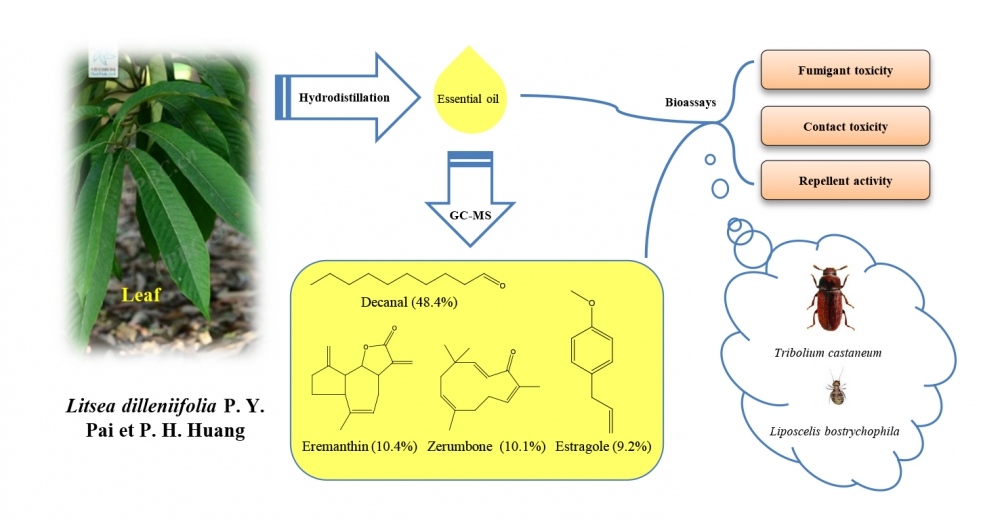JOURNAL 2157
Records of Natural Products
Year: 2022 Issue: 4 July-August
p.398 - 403
Viewed 2138 times.
GRAPHICAL ABSTRACT

ABSTRACT
The volatile oil from leaves of Litsea dilleniifolia P. Y. Pai et P. H. Huang was obtained by hydrodistillation. The qualitative and quantitative analysis of volatile constituents were performed by GC/MS and GC/FID. The volatile oil along with two major components was evaluated for their fumigant, contact toxicity and repellency against stored-product insects, namely Tribolium castaneum and Liposcelis bostrychophila. The volatile oil mainly contained decanal (48.4%), eremanthin (10.4%), zerumbone (10.1%) and estragole (9.2%). In bioassays, L. dilleniifolia volatile oil showed toxicity and repellent activities against T. castaneum and L. bostrychophila. The volatile oil, decanal and estragole at 78.63 nL/cm2 could cause 82-92% repellency against T. castaneum at 4h post-exposure. Among them, decanal (LC50 = 3.90 mg/L air) and estragole (LC50 = 5.33 mg/L air) had significant fumigant toxicity against T. castaneum, and estragole was strongly toxic to L. bostrychophila (LC50 = 0.61 mg/L air). The two components displayed a similar level of toxicity against T. castaneum in contact assays (LD50 = 21.91 and 20.41 µg/adult, respectively). This work indicates that L. dilleniifolia is promising to be developed as botanical insecticides and repellents to control pest damage in warehouses and storage rooms.
KEYWORDS- Botanical insecticides
- Liposcelis bostrychophila
- repellency
- Tribolium castaneum
- the volatile oil
- toxicity